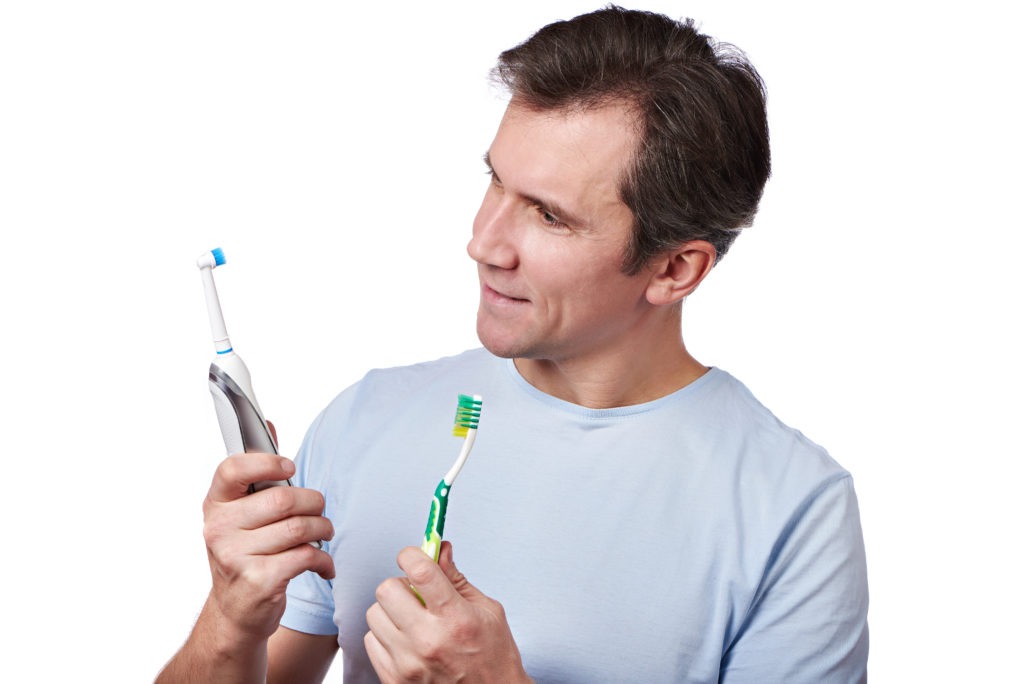In order to keep your smile looking great and feeling even better when wearing braces, it’s important to maintain an effective oral hygiene routine. Being consistent with brushing and flossing daily can greatly reduce your chances of developing cavities and gum disease, and is an essential part of successful orthodontic treatment. Even something as simple as brushing twice a day and flossing once before bed has been proven to help remove the bacteria, residue, and food particles that can lead to the buildup of plaque acids and hardened tartar.
If you’re a current braces patient with Seabreeze Orthodontics, you’re probably already well aware of how challenging it can sometimes be to clean your teeth and gums effectively due to the brackets, wires, and bands. These make it easier for food debris to get trapped and also create nooks and crannies that are hard to reach with a regular toothbrush, increasing your risk of bacteria and plaque developing. We recommend that all our patients brush twice daily for at least two minutes, along with nightly flossing. While there’s nothing too tricky about this kind of healthy habit, choosing the best products for braces can sometimes be a little more complicated!
When you walk down the oral care aisle of any store, there’s an enormous variety of products to choose from. There’s toothpaste for sensitive teeth, whitening gels, mouthwashes, flavored floss, manual and electric toothbrushes…we could go on and on! Most of these products are equally effective, but when it comes to toothbrushes, it turns out that the electric versions can actually have a slight edge over manual for orthodontic patients. In fact, one study by the American Journal of Orthodontics & Dentofacial Orthopedics found that an electric brush could remove a significantly greater amount of plaque than a manual one.
While many of our patients are able to clean their teeth perfectly well with a manual toothbrush, some really do find it beneficial to use an electric version. If you’re a braces patient who currently uses a regular toothbrush in your dental hygiene routine, keep reading below to learn why an electric toothbrush could actually be a better choice for your smile!
The advantages of electric toothbrushes for braces
The study mentioned above is one of several to show that electric toothbrushes can be more effective than manual brushes at removing plaque, with some of the best models removing up to 2x more total plaque. That’s a pretty significant difference! Several factors give these toothbrushes an edge over their manual counterparts, including:
Deeper cleaning
Because electric toothbrushes are designed to drive fluids in between the teeth, they can get deep down into the various nooks and crannies caused by brackets and wires with relative ease. Most models also tend to produce thousands of movements per minute, which is impossible for your to replicate on your own, no matter how fast you brush!
Custom cleaning modes
Similar to specialized toothpastes and mouthwashes, many electric toothbrush models have customized cleaning modes that are designed with a specific purpose in mind. These can include modes for anything from sensitive teeth to whitening and polishing modes for stain removal.
Less user error
Cleaning your teeth isn’t rocket science, but you might be surprised by how many people either rush through it or simply don’t know how to brush and floss properly. Brushing your teeth the right way is a critical component of oral care. Many cavities and a good deal of gum damage can be avoided by nothing more than cleaning our mouths thoroughly and regularly. Electric toothbrushes often come with timers, sensors, and multiple modes that take much of the guesswork out of brushing.
Electric toothbrush features
Electric toothbrushes come in many different styles and offer several different features, such as:
Battery-powered brushes
Some electric brushes will run on an AA or AAA battery. These work similarly to a manual toothbrush, but the brush head is designed so that the bristles spin or pulsate, adding a little extra power to your brushing technique. Battery-powered toothbrushes are usually the least expensive electric option, but the batteries should be replaced as soon as they run out to avoid acid leaks that can ruin your toothbrush.
Rechargeable toothbrushes
These brushes will usually recharge in a base that plugs into a wall outlet, so there are no batteries to replace. They often offer higher-tech options like timers, pressure sensors, and replacement reminders, and may also have a variety of brushing options, like oscillation or vibration.
Timers
Timers let you know how long you’ve been brushing, which can be helpful if you have trouble brushing for as long as you should. Some of the fancier timers are even sophisticated enough to keep track of how long you’re meant to brush each particular quadrant of your mouth.
Pressure sensors
Some rechargeable brushes include a sensor that will track the presser you are putting on your teeth. These alert you if you are brushing too hard, which can be a helpful feature if you suffer from sensitive teeth or weak enamel.
Multiple brush heads
Detachable brush heads let you change them out when the bristles wear out while keeping the electric base of your toothbrush. Some bases will only fit one type of brush head, but others are compatible with multiple types.
Different brush settings
Certain brushes offer multiple settings for more variety, including:
- rotary, where the head rotates in only one direction
- counter-rotational, where the head rotates in various directions
- rotating-oscillating, which allows different lengths of bristles to rotate in opposite directions
- oscillating-pulsating, which adds a pulsating motion to the oscillatory motion
Brushing your way to a beautiful smile with Seabreeze Orthodontics
When deciding on the best products to care for your braces and your smile, we recommend you always look for the American Dental Association seal of approval. Toothbrushes with this ADA seal have been studied and tested for safety and effectiveness, and they are guaranteed to perform as promised. Seabreeze Orthodontics also recommends you replace your toothbrush or brush head more often when you’re undergoing orthodontic treatment, as braces can be hard on the bristles and tend to wear them out more quickly.
Dr. Faja-Fernandez and the rest of our talented team are here to help you achieve a straighter, healthier smile. That includes keeping it in good shape while you’re in braces! We’re always happy to discuss any questions or concerns you have about your treatment plan or your overall oral health. Providing you with individualized care and the best orthodontic experience possible is our top priority!


